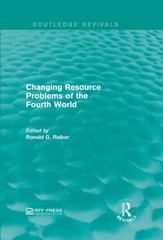economics questions;
5. (a) The following table shows the world population and the projection for 2012, according to the United States Census Bureau (USCB) estimates: Population in Billions 2 3 5 7 Year 1804 1927 1960 1974 1987 1999 2012 Years elapsed 123 33 14 13 12 13 (i) Suggest two reasons for the rapid growth in world population in recent times. (ii) Discuss the economic effects of an increasing population on the Irish economy. (30) (b) (i) State and explain the benefits of economic growth for developing countries (LDCs). (ii) Discuss one advantage and one disadvantage for the Irish economy of increased growth rates in developing countries (LDCs). (25) (c) The classical economist, Thomas Malthus, in his work An Essay on the Principle of Population (1798) created a theory on population. (i) Explain Malthus's theory on population. (ii) Is Malthus's theory on population relevant today? Explain your answer. (20) [75 marks] 6. (a) One of the economic aims of the Irish Government at present is to decrease government current expenditure. Discuss four other economic aims of the Government and use relevant statistics/information to justify your choice. (20) (b) 'Most eurozone countries with large deficits are using VAT to generate revenue.' (Irish Tax Institute, The Irish Times, November 201 1) (i) Explain, using examples, the difference between direct taxes and indirect taxes. (ii) Discuss the economic advantages and disadvantages for the Government of increasing VAT rates instead of income tax rates in its most recent budget. (iii) Outline how imposing a tax on sugary foods (e.g. fizzy drinks) could benefit the Irish economy. (35) (c) State and explain two economic arguments in favour of and two economic arguments against third level students contributing to the cost of their higher education. (20) [75 marks]3. (a) (i) Explain the following terms in relation to a factor of production: . Supply Price; . Transfer Earnings. (ii) Explain the concept Economic Rent and outline two circumstances under which a factor of production can earn it. (25) (b) (i) State and explain the economic reasons why entrepreneurship is important to the development of the Irish economy. (ii) State and explain three means by which the Irish Government could encourage entrepreneurship in Ireland. (30) (c) "There are 200,000 small firms in Ireland employing 655,000 people'. (Small Firms Association, December 2011) Discuss the reasons why small firms survive in the Irish economy. (20) [75 marks] 4. (a) With the aid of two clearly labelled diagrams, explain the relationship between: (1) the short run average cost curve and long run average cost curve. (ii) the short run average cost curve and marginal cost curve. (25) (b) Discuss the economic factors which should be considered by a firm when deciding where to locate its operations. (25) (c) Ocean Blue Led produces two boats weekly and incurs the following weekly costs: Rent: E1,200 Raw materials: 62,000 . . Labour: E1,600 Normal profit: 61,000 What is the minimum price at which each boat can be sold if production is to continue: (i) in the short run? (ii) in the long run? Explain your answers in each case. (25) [75 marks]1. (a) (1) Explain the Equi-Marginal Principle of consumer behaviour. (ii) State and explain three other economic assumptions used to analyse consumer behaviour. (25) (b) A manufacturer of three different products calculates the price elasticity of demand (PED) for each product as follows: Product A: -2.8 Product B: -1.0 Product C: -0.5 The manufacturer wishes to maximise its revenues. Explain in respect of each of these products, what change, if any, the manufacturer should make in the prices currently being charged to enable it to achieve its aim. Illustrate your answers with the aid of a demand curve for each product. (30) (c) You are given the following information about certain products: Cross Elasticity of Demand between Product X & Product A = -0.8 Cross Elasticity of Demand between Product X & Product B = +3.2 Cross Elasticity of Demand between Product X & Product C = -1.6 Cross Elasticity of Demand between Product X & Product D = +0.5 (i) Which of the products above are substitutes for Product X? Explain your answer. (ii) Which product is the closer complement to Product X? Explain your answer. (20) [75 marks] 2. (a) (i) Explain the reason for the shape of the demand curve of an individual firm in perfect competition. (ii) Outline two advantages of perfect competition. (20) (b) Explain, with the aid of a labelled diagram, the equilibrium position of a firm in short run perfect competition. (ii) With the aid of labelled diagrams, explain the impact which the entry of new firms would have on the market and on the equilibrium position of the firm. (35) (c) Contrast the characteristics of perfect competition with monopoly under the following headings: Barriers to entry; . . Profits in the long run; Economies of scale; . Price discrimination. (20) [75 marks]









